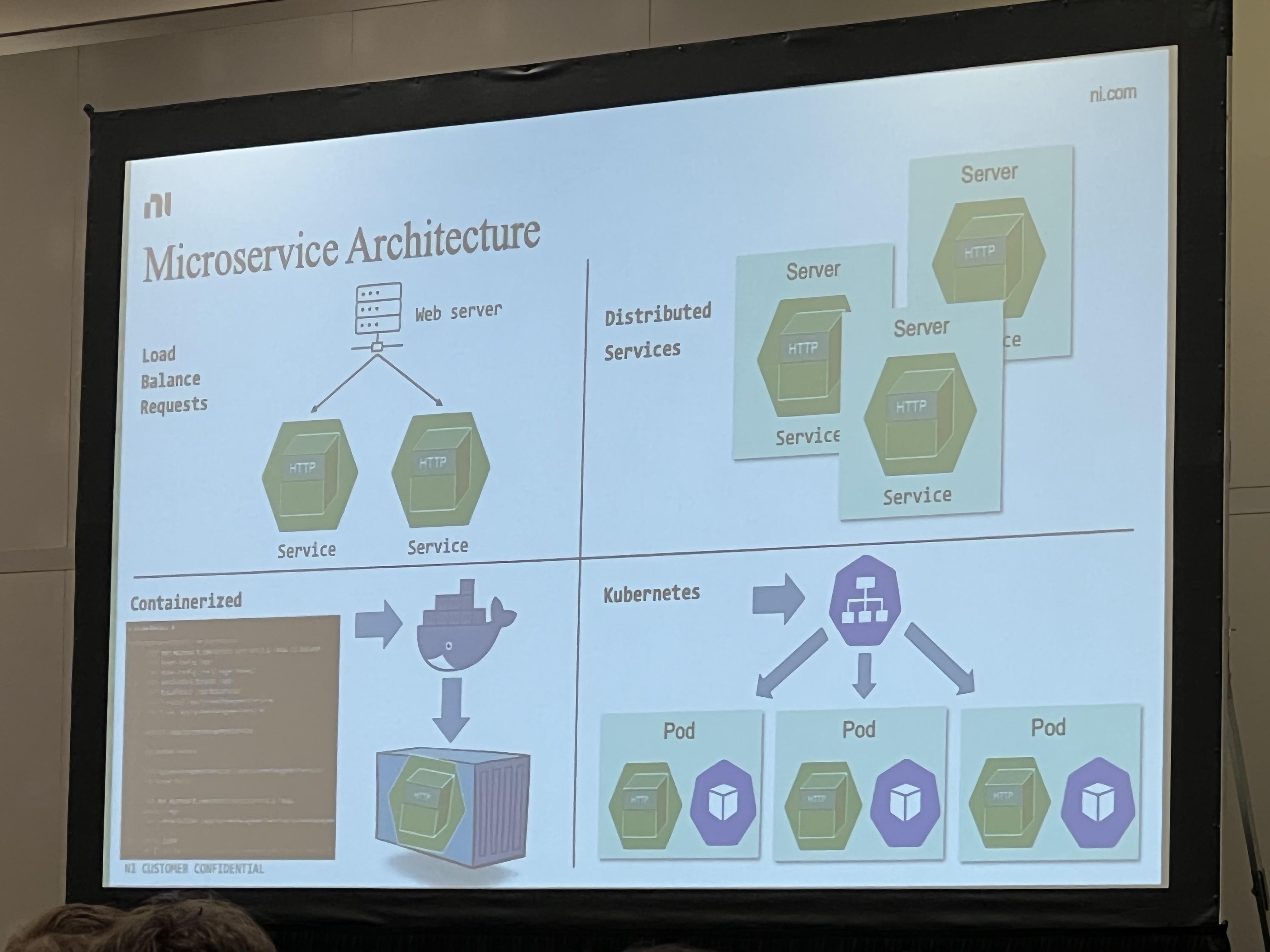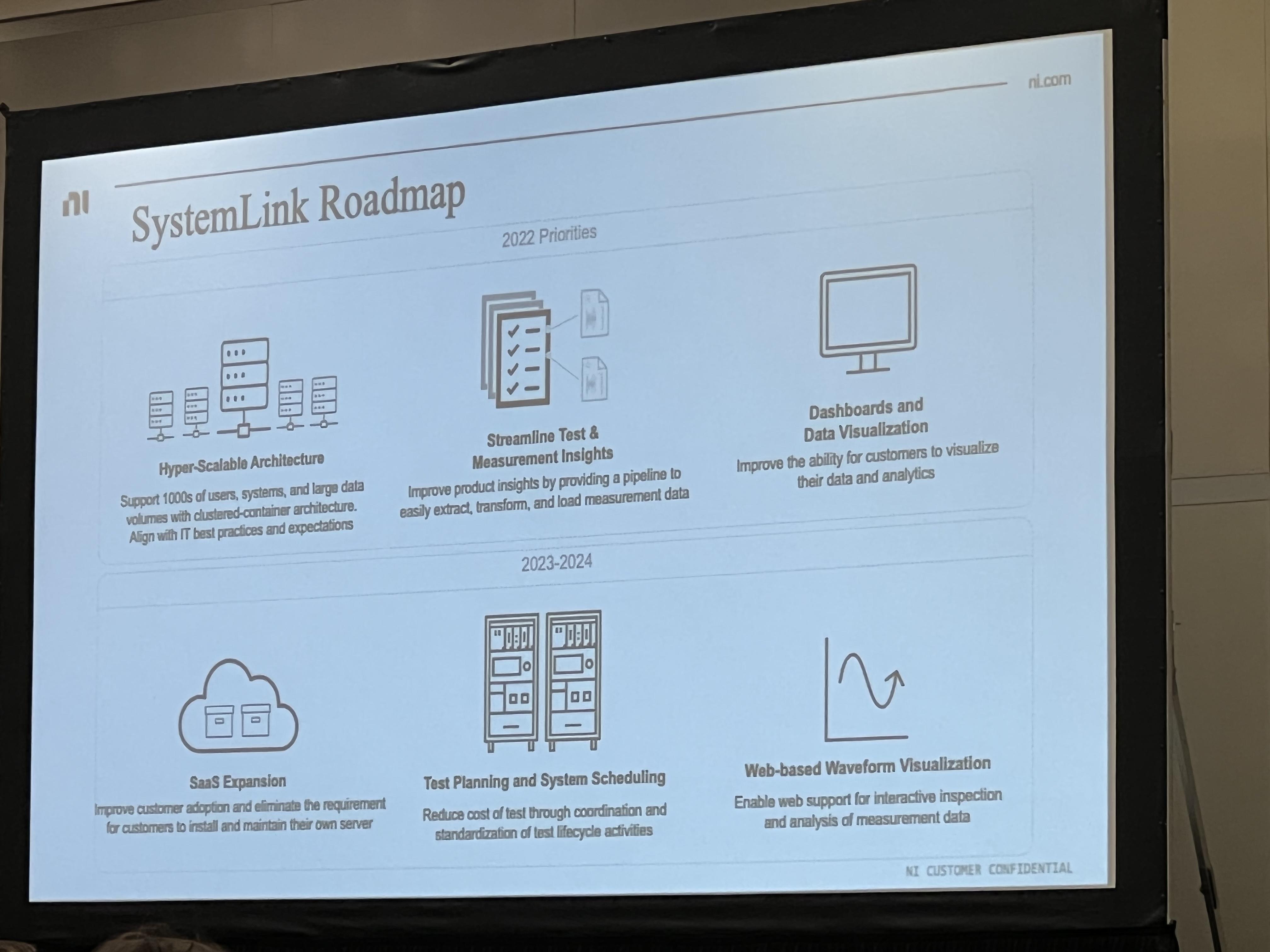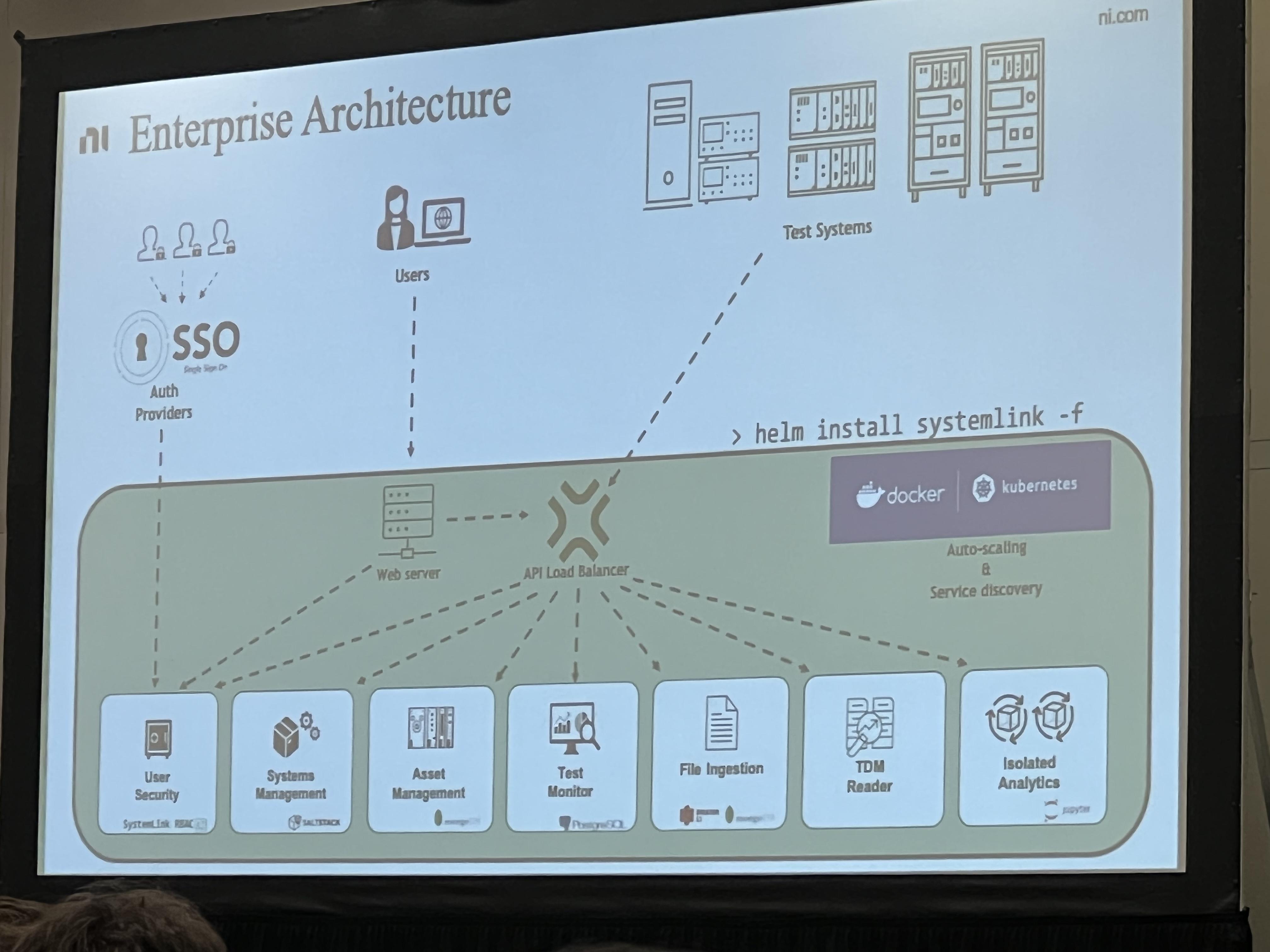-
Posts
693 -
Joined
-
Last visited
-
Days Won
21
Content Type
Profiles
Forums
Downloads
Gallery
Posts posted by Jordan Kuehn
-
-
34 minutes ago, Mark Moser said:
I am currently working in the aerospace industry as a test engineer and work mostly in research and development type contracts. I am the de facto LabVIEW developer for our department and will sometimes get called on to help with other LabVIEW needs elsewhere in the company. (its a large company at around 2000 employees). I really enjoy what I do, there's a lot of variety and I have really good job security being the only "LabVIEW" guy. The only issue I have is that I am generally really busy in the middle of contracts and towards the end, and then can have dead time where I have hardly anything to do while I wait for contracts to turn on. I don't want to leave the company but it can be frustrating being put into a job role that isn't a great fit while you wait for something better to come. I feel like I see a lot of people going the route of LabVIEW consultant, I am intrigued by this idea and feel like I could potentially do it because I am a CLD and CLED, but I also like the stability of working for someone else. I am just curious about other peoples LabVIEW career experience, are you a token LabVIEW developer, a consultant, work on a team, done it all? What has been your preference?
Sorry if this is rambly I rarely have the opportunity to talk to other career LabVIEW developers. Thanks for your input!
If the lumpiness of contracts does not appeal to you, going out as a consultant will be more of that but you'll also be in charge of sales, purchasing, invoicing, and customer relations. I worked as a LV consultant in a small group for 10 years, managing the Test and Measurement business side as well as the programming. It's a lot of work, but if you enjoy handling that it is rewarding and you gain experience in a wide variety of fields and applications. I now work for an oil and gas company as the lead LV developer and do enjoy the stability as compared to consulting. There's also the ability to continue to develop applications to full maturity over a longer development cycle than turn-key testers. I'd say it really depends on what type of work and experience you are looking to gain in your career.
-
Office 365 gave me many headaches in the past. Additionally updates would change the ActiveX interfaces breaking compatibility unless you reloaded and recompiled. I would typically try to purchase a single seat permanent license for a particular test stand and not use the IT software. Not sure if that is an option for you.
-
On 2/1/2023 at 1:27 PM, SebastienM said:
Nope. All these configuration modules are available through the WATS web application.
Here an example for software distribution :
https://virinco.zendesk.com/hc/en-us/articles/210511203-Getting-started-with-Software-Distribution
I have to precise that I'm currently not using these modules but plan to, and that I'm a TestStand user.
Maybe we should create another post to talk about WATS. My point here is that I don't trust System Link and I trust less and less NI.
Does this work for cRIO and RT targets? Raspberry Pi running LV?
-
Fair enough. Good luck and please keep us up to date as you progress or need beta testers!
-
I assume you are familiar with these already?
https://github.com/LabVIEW-Open-Source/LV-MQTT-Brokerhttps://www.wireflow.com/products/software/wf-wirequeue-mqtt-toolkit/
I use the latter extensively, both in Windows and Linux RT. I have some curiosity regarding the first one, both the client and the broker, but have yet to try it out. I do not know how many of us there are, but I do use MQTT heavily and would welcome an additional (paid or OSS) toolkit. One feature of a native broker that I would love to see is the ability to cluster brokers like EQMX or other.
-
If still active I would appreciate the link as well.
-
2 hours ago, Dan Bookwalter N8DCJ said:
quick question
Are the fpga and realtime bundled with any NI products , i have a copy of all the serial numbers from our one facility , but , there doesnt seem to be any specific to fpga/realtime , but , they do use them. So , i was curious if it is included in somethign else ?
Dan
https://www.ni.com/en-us/shop/software/products/embedded-control-and-monitoring-software-suite.html
-
That is working to measure loop iteration time. Stores the initial time in a shift register. Then each iteration takes the current time and subtracts the previous, while also storing the current time in the register for use in the next iteration.
-
 1
1
-
-
Is your HMI a PC running LabVIEW or is it something else? If the former, you can certainly use Network Shared Variables and get quite a lot accomplished. Especially if you just intend to expose the data to the host code and let it handle the logic and controls directly. You can also look at network streams if you want lossless communication, and/or to pass command/responses.
If not LabVIEW then you'll need to look at the protocols it supports and make a determination regarding where you want the logic parts to live. I typically find myself wanting to put as much in the cRIO as possible and keep the UI pretty thin/lightweight, especially if I want to have multiple UIs for the same device.
-
done
-
-
One big upside to the Enterprise version that I can see would be the High Availability feature as a result of the Kubernetes clusters. I'm no IT expert, but with what I know about this it seems like a very good choice to break the various components into individual clusters and allow for individually scaling them out as well as redundancy.
-
21 hours ago, ASTDan said:
Speaking for myself NI connect without community presentations isn't that interesting.
I would augment that with "...without community presentations OR (many) R&D presentations...". I went to several and almost all were of the Marketing variety of NI presentations, while I think there was just the one from AQ on Interfaces that I felt was really valuable. I do like the exposure to new products, but I get the most value from the advanced software presentations that R&D brings as well as the community presentations.
-
17 minutes ago, JKSH said:
To be clear: That NIWeek 2019 video doesn't contain any SystemLink at all.
SystemLink asks us to use its integrated 3rd-party user management tools, not to implement our own. In other words, SystemLink doesn't want us to follow that video!
I agree (and NI agrees) with y'all that we should not be rolling our own user management system. (This applies to all software, no matter what price it is)
At risk of derailing this thread, where is the documentation for these methods? I'm aware of local windows users and LDAP. Further, you do rightly point out the difference between systemlink and webvis. My conflation is due to wanting to utilize systemlink *and* webvis to serve data and dashboards to customers utilizing the same authentication method. As noted above the workspaces have issues with filtering properly using the system filter. I am only aware of workspaces as the ability to segment out accessibility of systems to users and even then I may want to limit data views via certain dates (system is on rent with different customers at different times), but that is another can of worms.
-
 1
1
-
-
11 hours ago, JKSH said:
Currently, non-Enterprise SystemLink does use LDAP and Windows Active Directory for user management, which is good. I haven't looked closely at what new technologies are available under Enterprise (Jordan mentioned OAuth?)
I may have misheard/misspoken here, but I thought they mentioned more open authentication methods/user management.
5 hours ago, Mads said:We do not want to roll our own, so we want SystemLink to handle it. And if NI does not want to roll their own - they can always use subcomponents that does, but to us as a user of SystemLink it would/should appear to be handled by SystemLink😉.
In our case the bulk of the users would be external clients and we would not want to handle their dashboard accounts in Active Directory...typically the user management would be handled by support engineers that would not have admin-access to AD.
I see some of these issues mentioned in the latest release note though. Perhaps it is time to have a closer look again.
Agreed strongly with this. With the price tag SL commands I shouldn't be making my own user management. Which is partially why I haven't implemented the method in the video I linked.
-
28 minutes ago, Mads said:
The presentation seems to show that we need to implement custom user account handling...(helpful in that regard, although just browsing quickly through the video it does not seem to be a particularly secure method - sending user names and passwords(perhaps I overlooked an underlying encryption?). What we were hoping for, as far as I remember now, was that that the user account administration and logon was handled securely by SystemLink itself, and that the selection of dashboards and/or what data those had access to would then depend on the user account (then only the last part might require the G-code to know anything about the user).
I too would like something native like this. We have dashboards that we use internally that customers would also use, but there is no built in method to segment that out best I can tell. The system filter doesn't respect workspaces either (shameless idea exchange plug) which would be one potential workaround. I do recall seeing some OAuth options on a slide (ETA: see the last slide I posted above) for the enterprise version which would be a step in the right direction. I had that presentation in my recent memory because I have it somewhere in the queue of items to try when implementing a customer facing dashboard.
-
5 hours ago, Mads said:
Regarding Systemlink for Enterprises; when SystemLink came out we wanted to use the WebVI-option to provide external users/groups dashboards offering data only that user had access to. So we needed programmatic access to the user information to then only present the dashboards/data that that user should be able to see, but that was not readily available. Managing such a setup was not practical then (we wanted to just be able to create user accounts, add them to a user group and then that user would automatically (no further programming etc needed) get access to the right data only).
Has there been any movement in such a direction (Enterprise?), or would you still need to have separate system link servers to ensure restricted access / user specific content?
I think this presentation from NIWeek 2019 may be on point here:
-
 1
1
-
-
-
Job Details
Description
Software Engineer
What is a Software Engineer?
The Software Engineer is responsible for maintenance and development of software that is core to our Freedom Series Completion System. The ideal candidate will have demonstrable software programming capability (specifically in LabVIEW), control systems experience, mechanical aptitude, ability to direct others, and an ability to operate in a fast-paced environment.This position can be located anywhere in the United States but will require some travel to Oklahoma City at the beginning of the position, and then as needed potentially for a few days to a week each month.
-
2 hours ago, drjdpowell said:
Two suggestions:
1) Consider using JSON as your config-data format, rather than clusters. Using JSONtext to manipulate JSON will be faster than using OpenG tools to manipulate clusters.
2) Programmatically get an array of references to all your config-window controls and register a single Event case for Value Change of any one of them. Then use their (hidden) labels to encode what config item they set. For example, your control with the caption "Baud Rate" could have the hidden label "$.Serial Settings.Baud Rate" which is the JSONpath to set in your config JSON (or config clusters).
This is brilliant. I imagine it could even become a standalone toolkit/extension of JSONtext.
-
-
I think Mads method will work. I think it's frowned on, but probably the most straightforward. Alternatively you could figure out what permissions are set on the script file and required for the operations it calls, then make all of those executable by the lvuser. All of this is annoying enough in linux, but then Linux RT user permissions and file permissions are even more complicated than usual as some permissions are reset on boot.
This pdf is a good reference and I think is still valid despite its age.
https://www.ni.com/pdf/support/us/ni_linux_real-time_security_user_guide.pdf
-
Two weeks away! I assume no LAVA BBQ?
-
With packages you can include files (e.g. an installer), and put them where you want them. You can also call post-install scripts. I think if there is a way to call the installer silently from the CLI you could script this. You are starting to tread on IT's world though, but sometimes you need to get it done and for it to work so perhaps you are best off doing it yourself this way
 Seriously though if they have the systems in a domain or something they might be able to handle the environment setup independently of your NI packages.
Seriously though if they have the systems in a domain or something they might be able to handle the environment setup independently of your NI packages.
-
 1
1
-








Where NI's head is at.
in LabVIEW General
Posted
I am intrigued by a separate "NI Create" event for developers.